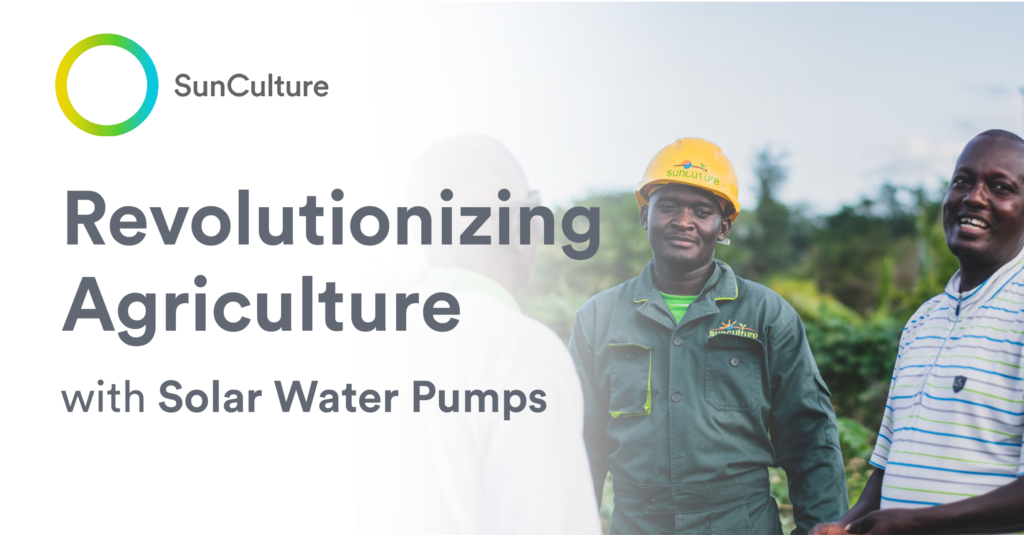How Can Solar Water Pumps Revolutionize Agriculture?
Globally, agriculture continues to be a prominent part of the economy. While many processes in agriculture have been mechanized, there are still some that remain dependent on manual labor, making them tedious and time-consuming. One such process is water pumping, which still relies on intensive labor for ensuring that irrigation can take place in fields.
The UN world water development report 2015 states that groundwater provides drinking water to at least 50% of the global population and accounts for 43% of all of the water used for irrigation. It is important to develop new innovative solutions to meet this global demand and bridge the growing gap between supplies and consumption for respective purposes.
At this moment, everyone is aware of the dooming projections of climatic changes. The real tragedy is that we are already past the tipping point, but most people don’t know it.
Here’s a little case study. The smallest landlocked country in Africa, Mali, lost over 50% of its total land area to desertification in one decade. The UN reports that about 98% of Mali is under the warning of desertification due to natural and human activities. Other African countries are not far behind. What can potentially reverse this trajectory is the ubiquitous nature of solar energy technology.
As agriculture is such a crucial part of the global economy, and as half of all food produced today is grown using water from natural sources and irrigation, there is a dire need to find alternative solutions to the current water pumping processes.
The problem is that the energy crisis and other resource conflicts are developing into critical problems for Africa. Oil is fast depleting and other unreliable energy resources such as coal are diminishing rapidly as well, resulting in vulnerable to poor economic growth in the continent. The need for energy has necessitated other renewable sources like wind, hydroelectric and biomass.
As if that’s not enough, smallholder farmers rely majorly on rainfall to irrigate their crops, neglecting the unpredictable climate. The lack of rain forces the farmers to resort to hand-operated crop irrigation or use fossil fuel-powered pumps, draining them physically and financially.
However, the most available energy source on the earth that cannot be exhausted for the next 500 years is solar energy. It can be tapped from sunlight through Solar Water Pumping (SWP). Besides, a solar water pump can save 20 to 50% of the cost of pump fuel for the farmer.
Solar Water Pumping involves pumping of water with the help of solar pumps and guides it to a higher elevation where it can be used to irrigate crops.
In other words, a solar-powered water pumping system (SPWS) is a sustainable solution for lifting the water out of a borehole and distributing it over farmland. It eliminates high maintenance costs, decreases risks of an electrical wiring failure, reduces the price of investment for farmers and increases their profits, making them self-reliant in the production of food and hence conquers hunger.
A Solar Water Pump is one of the many cost-effective and efficient solar-powered solutions.
One of the users of Rainmaker, a smallholder farmer says, “I used to get the water from the wells using my hands. I used to take two to three minutes to bring 20 liters, even after that the water was not enough.” She goes on to say, “Now that I have water, I want to increase daily farming. I just switch on the machine and I get my water. I irrigate.”
Most of the available water pumps in the market can only pump up to 10 meters, whereas, the Rainmaker by SunCulture exceeds its depth 10 times. This is relevant for farmers who drew water from rivers as well as deep more holes and wells.
But that’s not all…
There are several more solar products to ease the efforts of a smallholder farmer for daily activities.
According to experts, 60% of the agricultural land in Africa is arid. Unfortunately, droughts and floods are a common phenomenon in many African countries. These, coupled with other natural causes, severely affect smallholder farmers’ productivity. Solar energy is a pivotal technological solution that can help solve these problems. Naturally, its potential has stirred up interest among African elites and encouraged them to take action to understand and invest in solar water pumping as a bridge towards industrialization.
In essence, solar energy revolutionizes agriculture!
Do you want to reap the best benefits of solar-powered products? If yes, you are on the right page! Approach us at +254 700 327 002. We provide free installation and support for the solar products we deliver.



